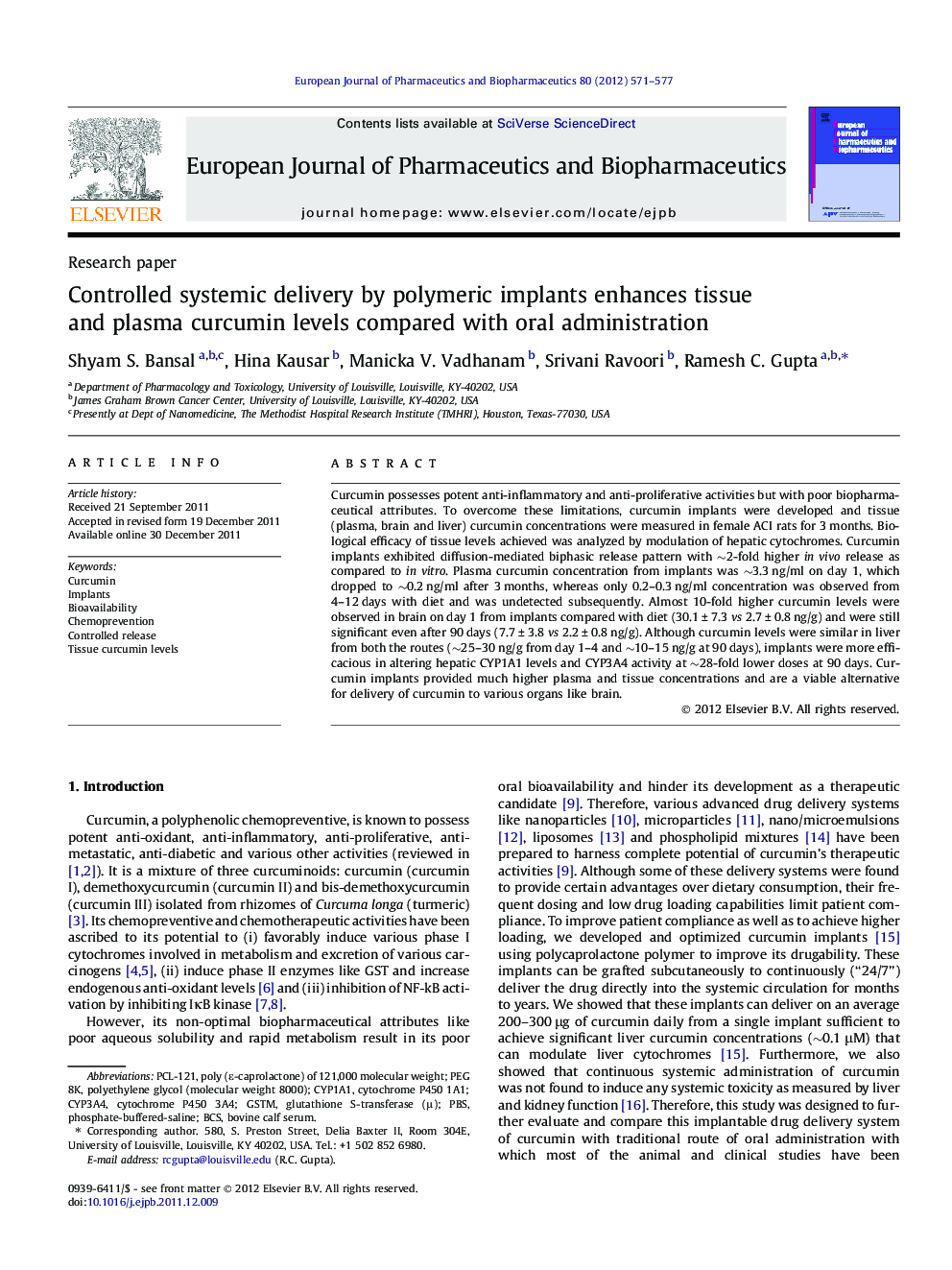| کد مقاله | کد نشریه | سال انتشار | مقاله انگلیسی | نسخه تمام متن |
|---|---|---|---|---|
| 2083885 | 1545362 | 2012 | 7 صفحه PDF | دانلود رایگان |

Curcumin possesses potent anti-inflammatory and anti-proliferative activities but with poor biopharmaceutical attributes. To overcome these limitations, curcumin implants were developed and tissue (plasma, brain and liver) curcumin concentrations were measured in female ACI rats for 3 months. Biological efficacy of tissue levels achieved was analyzed by modulation of hepatic cytochromes. Curcumin implants exhibited diffusion-mediated biphasic release pattern with ∼2-fold higher in vivo release as compared to in vitro. Plasma curcumin concentration from implants was ∼3.3 ng/ml on day 1, which dropped to ∼0.2 ng/ml after 3 months, whereas only 0.2–0.3 ng/ml concentration was observed from 4–12 days with diet and was undetected subsequently. Almost 10-fold higher curcumin levels were observed in brain on day 1 from implants compared with diet (30.1 ± 7.3 vs 2.7 ± 0.8 ng/g) and were still significant even after 90 days (7.7 ± 3.8 vs 2.2 ± 0.8 ng/g). Although curcumin levels were similar in liver from both the routes (∼25–30 ng/g from day 1–4 and ∼10–15 ng/g at 90 days), implants were more efficacious in altering hepatic CYP1A1 levels and CYP3A4 activity at ∼28-fold lower doses at 90 days. Curcumin implants provided much higher plasma and tissue concentrations and are a viable alternative for delivery of curcumin to various organs like brain.
Schematic of observed curcumin distribution to various tissues from polymeric implants as compared to dietary administration.Figure optionsDownload high-quality image (106 K)Download as PowerPoint slide
Journal: European Journal of Pharmaceutics and Biopharmaceutics - Volume 80, Issue 3, April 2012, Pages 571–577